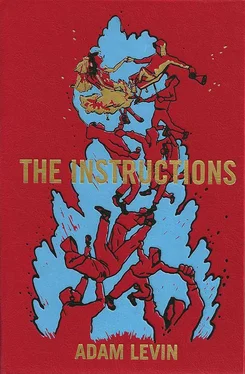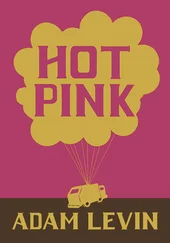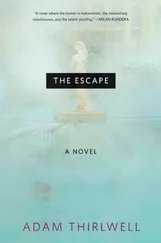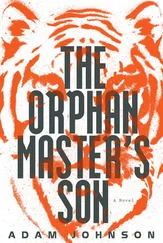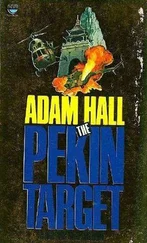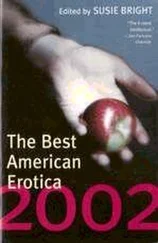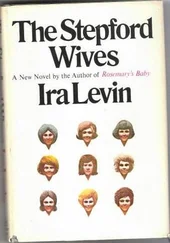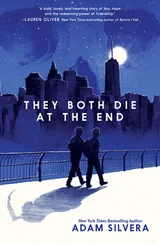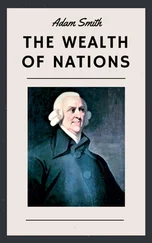“David was not an option,” said my mother. “My parents had passed away before I became pregnant, and we were going to name the baby Beth, after Bathsheba, my mother; or Michael, after Malchizedek, who was my father.
“As you know,” she said, “Judah had, a few years earlier, stopped practicing. No more shul and no more tefilin in the morning. Saturday became his day to read briefs. And all of this was fine with me — I had stopped practicing a few years before him , and my observance had never been so extensive to begin with, so it was irrelevant to me — he was a Jew either way and I loved him. What you might not know, however, is that my husband, in the absence of the many daily rituals he had for so long been accustomed to performing, became wildly superstitious. Constitutional Law, though it might have satisfied his Gemmaric leanings, failed to challenge him in the way that the more mystical aspects of—“
“Okay, Jung,” said my father, “why not just tell the story?”
“I am telling the story,” my mother said.
“This is a woman,” said my father to Yuval, “who out one side of her mouth whispers hoarsely about mysticism and the meaning to be found within the shapes of birthmarks, and out the other calls herself a behaviorist.”
My mother said, “Easy as a child breathes a wish at a dandelion, my love, is exactly how hard it would be for me to tear your limbs from their sockets.”
“Sure,” said my father. “Beat me up later, then, and be poetic about it, too. Toughguy. Sabra. Weirdo. Just get to the dream, already. You’re gonna put Yuval to sleep.”
“She’s not—” said Yuval.
“No one asked you,” said my father.
Yuval winked at me. Then my father winked at me. Then my mother. I’ve never been able to wink.
My mom said, “I cannot leave out the nails, Judah.”
“Sure, okay,” said my father. “The nails. It’s better a pregnant woman doesn’t step on nail clippings, yes? Because nails are the last remnants of the etcetera, etcetera… and they can cause an etcera…Yuval knows about the nails, so just let’s get on with it.”
“He talks,” said my mother, “as if this had not all come from him.”
There are arguments about the importance of nail-clippings. Some people say that they are supposed to be treated with reverence, that you are supposed to bury them. Others say they’re like gooze and earwax and you can just throw them away. I don’t know of anyone who actually buries their nail-clippings, though many will throw them into some fire instead of the garbage. Some people don’t even throw them in the garbage, though. They stick them between couch cushions or bite them off and flick them like snots, and some even spit them on the floor. Those are the people, I think, who should be taught that a nail-clipping can still an unborn baby. Hopefully the teaching would frighten those people, because it’s gross what they do, especially the spitting ones.
The belief that pregnant women will miscarry if they step barefoot on nail-clippings comes from two stories whose meanings too easily echo into noise. The first takes place on the night of the sixth day, which was the first day of Man: By the time night fell, Adam and Eve had already been expelled from Gan Eden, and were very frightened. It was Shabbos, and pitch black, except for the flames of the candles Eve had lit before the sundown. In the blackness, the only thing that could comfort Adam and Eve, the only thing that could convince them that they still had shape in the darkness, that they were still alive, was the reflection of the candleflames in their fingernails.
The facts of the second story contradict those of the first one, but I like the second one better. This second story has it that Adam and Eve were born into the world covered head-to-toe in a clear, hard, protective enamel, but that as soon as they ate from the Tree of Knowledge of Good and Bad, a pinhole in the enamel developed at the center of each of their backs. As they grew older, their enamel-holes got larger: dime- to penny- to nickel- to quarter-size, and then CDs and personal pizzas and phonograph records, and then the holes wrapped around to the front and continued to grow. It was by watching the progress of the enamel’s disappearance that Adam and Eve judged how much time they had left to live. They probably believed that they would die as soon as the enamel was entirely gone — that would make sense. That is not what happened, though. They died when the enamel had receded to the middle of the top of the first joints of the fingers and the toes. I don’t know if that makes Hashem more or less merciful than if he’d killed them when they were expecting it, but it’s a very interesting quandary, I think, worthy of commentary and debate. It is not, however, germane to the story at hand.
What’s germane is that in the first story, nails prove to be gifts given by Hashem to Adam and Eve to protect their sanity in the night, outside the Garden. In the second story, the enamel’s recession lets Adam and Eve know that protection from death is fleeting. So in the first story, the gift is a consolation to Adam and Eve for being outside of the Garden; and in the second, the enamel’s progressive erasure marks their growing distance from the Garden, their growing proximity to a state of no protection.
So without Eden, death approaches, which is scary; but without the approach of death, there would be no way to long for Eden. The only people who don’t know this are unborn babies. Unborn babies only know the womb, which is a kind of Eden. The womb is a membrane that protects unborn babies, as Eden was a membrane that protected Adam and Eve; and nails, though membranes of a practical kind, are also, more importantly, the physical representation of the knowledge of membranes.
Before they had knowledge of good and bad — which is to say before they had knowledge of protection, knowledge of membranes — Adam and Eve, having been born adults into the womb of Eden, nonetheless knew there was such a thing as the Tree of Knowledge of Good and Bad, and they made the choice to eat from it. It is a choice every baby makes when it leaves the womb. Inside the womb, though, there is nothing like the Tree of Knowledge of Good and Bad, so the unborn baby is unaware of the presence of choice.
Unless — according to the belief currently under examination — the mother, barefooted, steps on a nail-clipping. If that happens, the knowledge that there is choice, that there is a choice to learn about membranes, as well as the knowledge of membranes itself, somehow gets learned by the unborn baby all at once, which is too much for the unborn baby to understand, and it dies before it was ever truly alive.
The problem with this belief is that it is derived from a confusion of the representational with the actual. What nails represent (Hashem’s protection against death, the existence of choice, etc.) becomes confused with what nails actually do (protect the toe- and finger-tips, allow for clawing, etc). To insist that fingernails are choices or actual protection against death, would be like insisting that when the stars and stripes go up in flames, America does too.
“However,” might argue a scholar, “when a man sets fire to an American flag, certain Americans get angry or ‘inflamed.’ Therefore, to dismiss the belief that clippings still babies on the grounds that the power of nails is only symbolic would be cheap of Gurion ben-Judah.” And that scholar would be correct. The symbolic or representational can affect the actual. Obviously.
But we are still stuck with the fact that when the nail-clipping is stepped on, it doesn’t enter the mother’s body. I.e., if it doesn’t enter the mother’s body, how can it get into the womb for the baby to give it witness and thereby affect the baby with its symbolic power the way a burning flag will a zealous patriot? It can’t. Not physically.
Читать дальше
